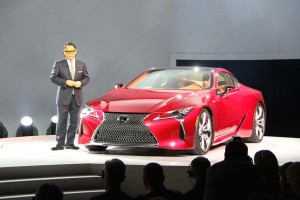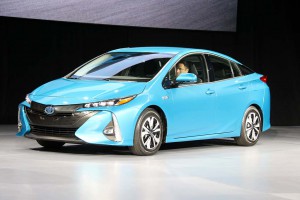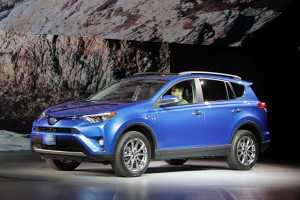For a second year in a row, Toyota saw its profits tumble, this time by nearly 21%, largely driven by the high cost of propping up demand in a slowing U.S. market.
Earnings were also hammered by unfavorable exchange rates, company officials noted during a media briefing on Wednesday, though at $16.1 billion, or 1.83 trillion yen, Toyota still managed to out-earn its biggest rivals, including General Motors and Volkswagen.
But that wasn’t enough to satisfy CEO Akio Toyoda, especially in light of the decline Toyota experienced in the previous fiscal year ending March 31, 2016. “In the sporting world, two years of falling profit would be considered a losing streak, and I hate losing,” he told reporters and analysts.
While net earnings slipped 20.8% for the latest fiscal year, revenues were off a more modest 2.8%, to $242.2 billion. But operating income took a solid, 30.1% hit for the 12-month period, declining to $17.5 billion.
Toyota also reported that its normally strong profit margins slipped to 5.8% for the fiscal year, down from 7.2% a year earlier.
The news comes as Toyota fights to regain its position as the world’s largest automotive manufacturer by volume. It slipped behind Volkswagen for the first time last year, marking only the second time Toyota wasn’t king-of-the-hill in nearly a decade. On the positive side, the Japanese maker did regain the title during the first quarter of 2017.
Toyota officials said sales came in at 10.25 million for the fiscal year, essentially flat, year-over-year. The question is how they will fare in the months ahead. Among the biggest challenges is maintaining momentum in the U.S. market. Overall new vehicle demand slipped 4.7% in April, marking the fourth consecutive monthly decline.
The U.S. market is as tough as it has been in a number of years, with the demand for incentives reaching levels Toyota has not seen before, Bob Carter, head of the maker’s U.S. Automotive Operations, said last month. Meanwhile, Jim Lentz, the CEO of Toyota North America, warned that the industry, as a whole, may have to “lift off the accelerator,” if demand doesn’t perk back up.
(US auto sales fall hard in April. Click Here for the story.)
It remains to be seen if that might force Toyota to continue scaling up rebates and other U.S. givebacks, though during the Wednesday Tokyo news conference, Executive Vice President Osamu Nagata insisted the automaker will exercise “adequate control” over such incentives.
Toyota is hoping that it will be able to boost momentum, even in a declining U.S. market, by shifting more of its production to SUVs and other light trucks. A month ago, it announced it would add 100,000 light trucks to its American production schedule this year.
During the earnings news conference, CEO Toyoda tried to put a good spin on Toyota’s performance by noting the automaker is shedding its reputation for producing safe and reliable but less than exciting products, pointing to new models like the redesigned 2018 Camry and the all-new Lexus LC sports coupe.
“Until now, there were times when Toyota’s cars were called ‘boring’ or were said to be lacking in character,” Toyoda said. “But I now feel that, in terms of driving and design, our customers have begun to favorably evaluate our cars.”
Like its competitors, Toyota is facing the challenge of keeping up on a variety of new technological fronts. It has been ramping up efforts to bring autonomous vehicles to market. And, after long focusing on conventional hybrid powertrain systems, it has launched a production fuel-cell vehicle, the Mirai and the new Prius Prime plug-in hybrid – the latter recently named World Green Car of the Year. Now, Toyota is working to add pure battery-electric vehicles to its line-up.
(Toyota looks to build hydrogen semi-truck, use it to reduce smog at L.A. ports. Click Here for more.)
Toyota plans to push R&D spending to near-record high levels in the new fiscal year, at 1.05 trillion yen, about 4% of its revenues.
“Given the size of Toyota, we must be able to sustain such R&D investment; that’s the only way in which we can achieve sustainable prosperity,” said President and CEO Toyoda.
(Toyota’s US CEO hoping Trump infrastructure plan can stave off industry downturn. Click Here for the story.)



